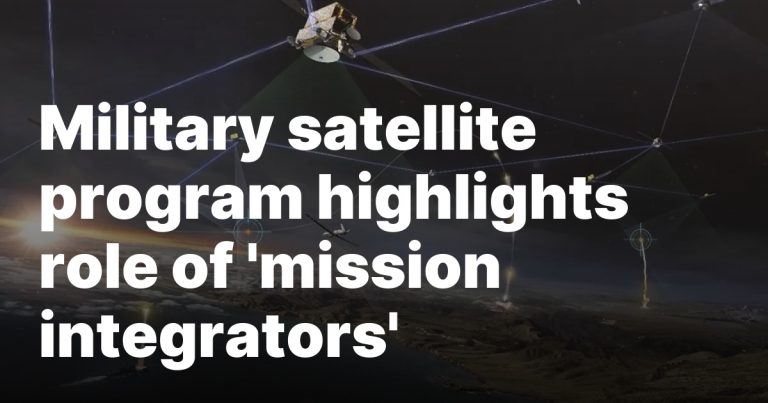WASHINGTON — The Pentagon is ramping up efforts to bring commercial technology into military systems, betting that private-sector speed and innovation can help modernize U.S. defense programs, especially in space.
This push could increase the demand for so-called “mission integrators”—engineering firms that specialize in making legacy technologies and newer commercial tech work together. That’s no small task in space networks, where each satellite maker may design its systems differently.
Science Applications International Corporation (SAIC), a defense contractor based in Reston, Va., recently won a $55 million contract from the U.S. Space Force’s Space Development Agency (SDA) to help integrate a satellite network for Tranche 3 of the Proliferated Warfighter Space Architecture (PWSA). The constellation aims to boost the military’s ability to detect and respond to missile threats.
David Ray, executive vice president for space and intelligence at SAIC, said the challenge is in translating commercial technologies into mission-ready systems that meet strict defense requirements. “We live in very complex times, when we’re talking about how we can take all of our legacy systems and integrate it with new commercial technologies to deliver capabilities that haven’t been delivered before,” Ray said in an interview with SpaceNews.
Tranche 3 is projected to have roughly 140 satellites for low-latency communications—the so-called Transport Layer—and 54 satellites for the Tracking Layer, designed to spot threats such as hypersonic missiles. But the satellites come from a mix of commercial vendors, each with different hardware and software.
“Everyone’s architecture is different,” Ray said. “In addition, all of those satellites still have to talk to a ground station.”
The integration challenges aren’t new, but they’ve become more pressing. In earlier phases—Tranches 1 and 2—the SDA ran into difficulties testing and operating satellites from various manufacturers. Those issues prompted the agency to bring in an external integrator for Tranche 3 from the outset, with the goal of building interoperability into the system from the ground up.
While SDA already requires optical terminals that conform to a standard, Ray noted that interoperability needs to go deeper. The real complications, he said, are at the operating system level. “Once you get into the intricacies of being able to pass data, and you get two levels below, that’s where the impact often occurs.”
SAIC is using digital engineering tools such as modeling and simulation to find potential disconnects early in the process. For Tranche 3, that means reviewing vendor proposals to flag compatibility problems before satellites are built.
Integration challenge
A vertically integrated space company like SpaceX builds all its satellites and ground stations, creating an integrated network from the outset. That model is difficult to replicate in defense programs, according to Ray.
“The challenge we have as a government is that you have billions and billions of dollars that are invested in legacy systems that are still absolutely critical to the national infrastructure, and you have to bring new systems, both government built and commercial into that,” he said. “Those systems that were built years ago don’t necessarily have the same type of architecture of those that are being built today.”
Ray suggested that, beyond Tranche 3, SDA should consider a mission integrator for the entire PWSA. “How can we have backward compatibility to Tranche 1 and Tranche 2, and then how do we go forward to all the future tranches so you can have a level of consistency?” he said.
“And so my biggest fear is that we don’t have the continuum,” Ray added.
Broader implications
The challenge of integrating technologies from different organizations “is rearing its head in every facet of the government, whether it be intelligence, whether it be in missile defense,” Ray noted.
This has a major impact on military networks that depend on fast access to information to enable leaders to make decisions quickly. “What we’re going to do for SDA is a microcosm of things to come at a broader scale,” he said.
The proposed Golden Dome missile-defense system that the Pentagon is now planning will be a major test case for the ability to integrate legacy and cutting-edge technologies, according to Ray.
For programs like Golden Dome, Ray said, the government will need integrators that understand both sides of the tech divide.
“It’s difficult for the government to act as a mission integrator because technology moves at a faster pace than the government can keep up,” he said. Moreover, frequent leadership turnover in defense programs makes continuity hard to maintain. “There is no space program that’s two to three years. They’re all five to 10-year efforts.”

